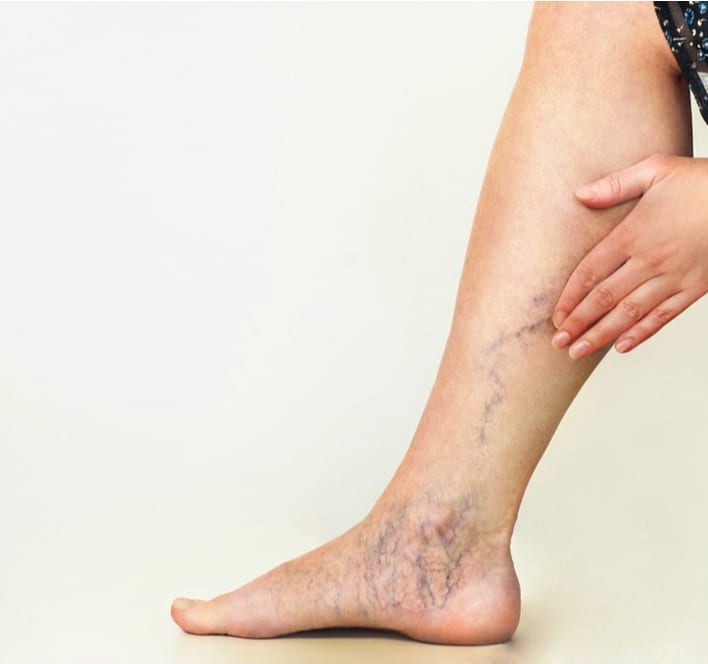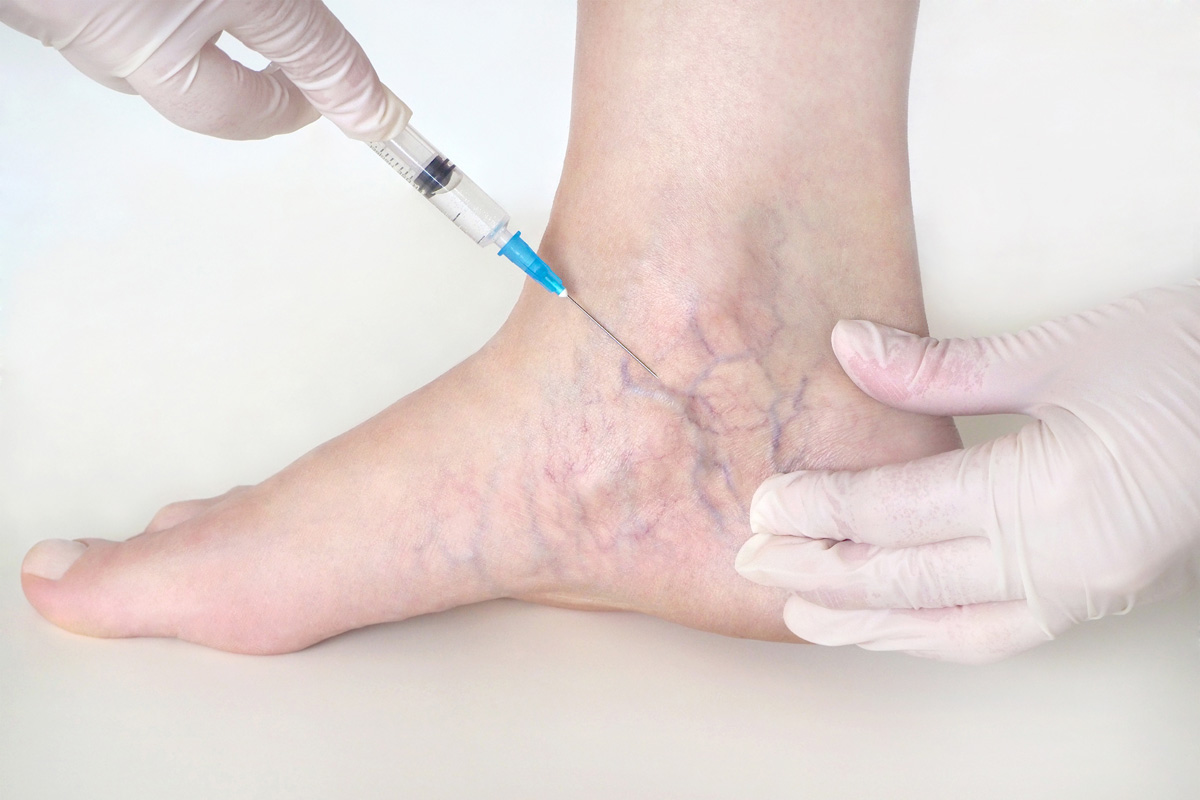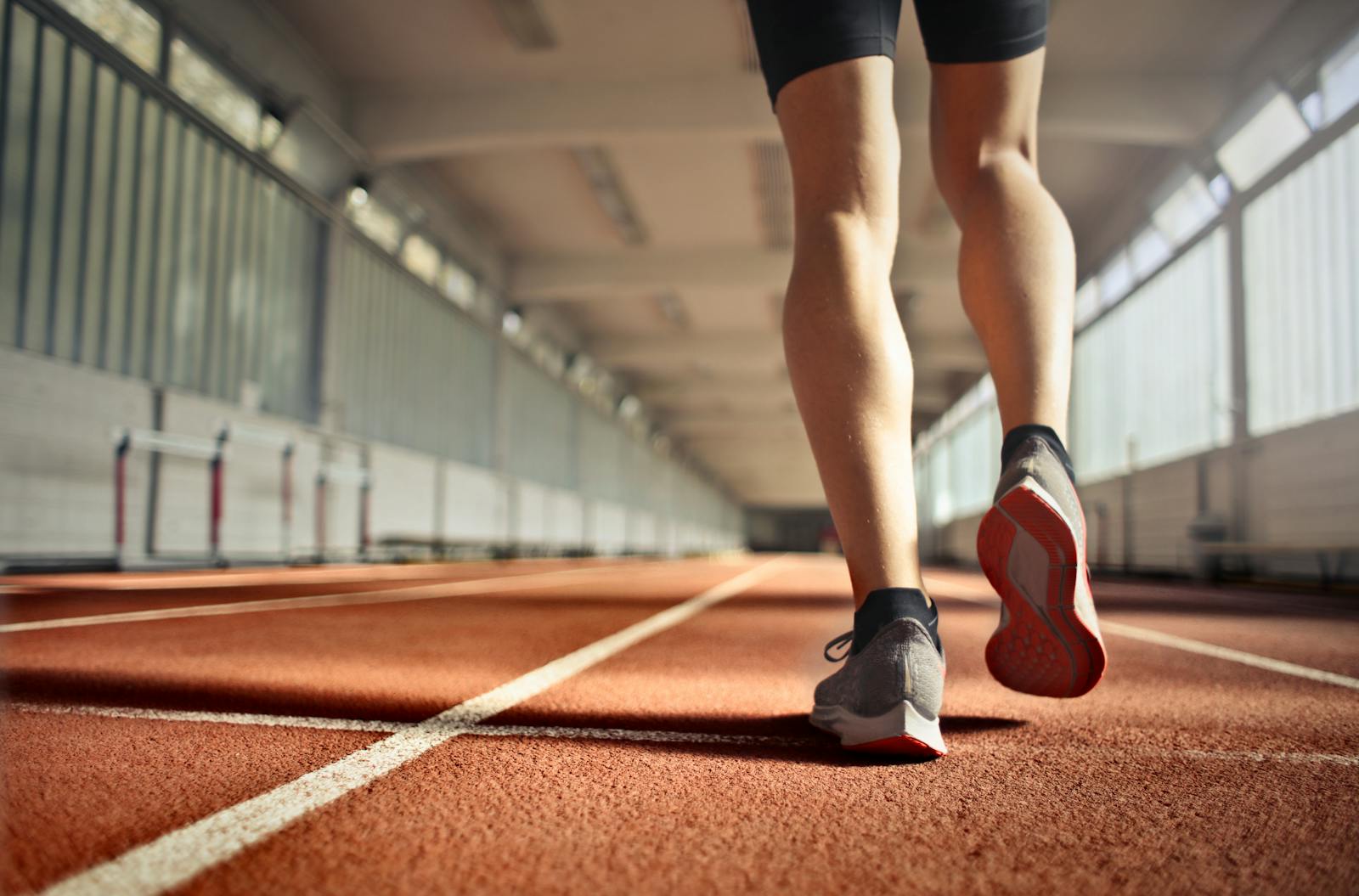Non-surgical treatments for varicose veins provide accessible alternatives to invasive procedures. These include sclerotherapy, which involves injecting a solution to shrink veins, and endovenous laser treatment, which uses heat to close affected veins. Additionally, use of compression stockings and lifestyle modifications, such as regular exercise and maintaining a healthy weight, can alleviate symptoms and improve vein function. While these interventions are generally safe, potential side effects may include minimal discomfort and changes in skin color. Further exploration into this subject is highly beneficial for those considering non-surgical solutions for varicose veins.
Understanding Varicose Veins
Varicose veins, those enlarged, twisted, and often discolored vessels visible beneath the skin, are a common medical condition affecting millions of adults worldwide. Understanding the anatomy of veins is important to comprehend this condition. Veins, unlike arteries, have thin walls and carry deoxygenated blood from body tissues back to the heart. They are equipped with one-way valves that prevent blood from flowing backward due to gravity.
In the context of varicose veins, these one-way valves fail to function properly, leading to blood pooling in the veins, causing them to enlarge and twist. Varicose veins primarily occur in the legs, where the force of gravity is greatest, making blood return to the heart more challenging.
Prevention of varicose veins primarily focuses on lifestyle modifications that promote healthy vein function. Regular physical activity, maintaining a healthy weight, avoiding prolonged standing or sitting, and wearing compression stockings can help improve blood flow and prevent the onset of varicose veins. Remember that while prevention strategies can reduce the risk, they cannot entirely eliminate the possibility of developing varicose veins.
Causes and Symptoms of Varicose Veins
Several factors contribute to the development of varicose veins, and they often present with distinctive symptoms that warrant medical attention. One of the most significant causes is vein inflammation. This inflammation, which can result from a variety of circumstances such as prolonged standing or sitting, can damage the vein walls, leading to the formation of varicose veins.
Genetic predisposition also plays an important role in the development of this condition. Studies have shown that individuals with a family history of varicose veins are at a higher risk of developing them. This is due to the genetic effects that influence the strength and elasticity of the vein walls.
Symptoms of varicose veins can vary greatly, but they often include veins that are dark purple or blue in color, and veins that appear twisted and bulging, often like cords on your legs. Some people also experience aching pain and discomfort, or a heavy feeling in the legs. Other symptoms may include swelling in the lower legs, itching around one or more of your veins, and skin discoloration around a varicose vein. It’s important to seek medical advice if these symptoms persist or cause concern.
Importance of Treating Varicose Veins
The necessity of addressing varicose veins cannot be overstated, not just for cosmetic reasons but for health considerations as well. Untreated varicose veins can present serious health risks that can potentially be avoided with early intervention. Learning about the non-surgical options available for treating varicose veins can be the first step towards improved vascular health.
Health Risks of Varicose Veins
Understanding the potential health risks associated with varicose veins underscores the importance of seeking appropriate treatment. If left untreated, these veins can lead to serious complications. One significant risk is vein thrombosis, a condition where a blood clot forms in the vein, causing pain and swelling. If a clot breaks free, it could travel to the lungs, resulting in a life-threatening condition called pulmonary embolism. Another complication is the development of varicose related ulcers. These are wounds that form on the skin due to long-term high pressure in these veins, typically around the ankles. These ulcers are painful, hard to treat, and can lead to serious infections if not addressed promptly. Hence, it is essential to manage varicose veins effectively.
Benefits of Early Treatment
Why wait for complications when early intervention can effectively manage varicose veins and prevent the associated health risks? The benefits of early treatment are manifold. Preventive measures, taken at the first signs of varicose veins, can slow down their progression and alleviate discomfort. These include lifestyle changes such as regular exercise, a balanced diet, and avoiding long periods of standing or sitting. Early diagnosis, on the other hand, enables a more efficient treatment plan, mitigating potential complications like blood clots or ulcers. It also decreases the likelihood of recurrence. Addressing varicose veins at the earliest stage not only enhances quality of life but also contributes to overall vascular health.
Non-Surgical Treatment Options
Exploring non-surgical treatment options for varicose veins is vital for individuals seeking relief without the challenges of invasive procedures. Vein mapping techniques are increasingly used to identify the extent of varicose veins and guide the treatment plan. This non-surgical approach provides a detailed view of the venous system, helping to customize the treatment to individual needs. On the other hand, herbal remedies effectiveness in treating varicose veins has been a topic of interest. While some studies suggest potential benefits of certain herbs in reducing inflammation and improving blood flow, more research is needed to substantiate these claims. Hence, it is important to consult with healthcare professionals before starting any herbal treatment for varicose veins.
Overview of Non-Surgical Treatments
The treatment landscape for varicose veins has broadened considerably in recent years to include numerous effective non-surgical options. Two such treatments, Sclerotherapy and Endovenous Laser Therapy, have emerged as leaders in this field. The following discussion will provide an overview of these procedures, shedding light on their processes, benefits, and potential drawbacks.
Understanding Sclerotherapy Procedure
One of the most common non-surgical treatments for varicose veins is a procedure known as sclerotherapy, which is renowned for its high efficacy and minimal invasiveness. This treatment involves the injection of a sclerosing agent into the vein, causing it to shrink and eventually disappear. In a sclerotherapy cost analysis, the price can vary depending on the severity of the condition and the number of sessions required, but it is often more affordable than surgery. Post procedure care is straightforward, with patients usually able to resume normal activities almost immediately. It’s important, however, to follow the doctor’s advice regarding compression stockings and avoiding strenuous exercise for a short period to achieve best results.
Benefits of Endovenous Laser
While sclerotherapy has its merits, another non-surgical method that demonstrates significant benefits in treating varicose veins is Endovenous Laser Treatment. In a laser effectiveness comparison, Endovenous Laser Treatment shows superior results regarding vein closure rate and recurrence prevention. This approach employs a small laser fiber, introduced into the problematic vein, subsequently delivering thermal energy to close it off. The procedure is minimally invasive, usually performed under local anesthesia with minimal discomfort. Pain management post treatment is very effective, with most patients reporting little to no pain. It’s also worth noting that this treatment has a shorter recovery time compared to traditional surgical methods. Endovenous Laser Treatment presents a highly effective, less painful alternative for varicose vein treatment.
Sclerotherapy for Varicose Veins
In the domain of non-surgical treatments for varicose veins, sclerotherapy has emerged as a particularly effective option. This minimally invasive procedure entails the injection of a solution directly into the affected veins, causing them to shrink and eventually dissolve.
Sclerotherapy recovery time is relatively short, with most patients able to resume daily activities immediately after treatment. However, patients are generally advised to wear compression stockings for a few weeks post-procedure to promote best healing. Discomfort, if any, is usually minor and transient.
Sclerotherapy cost factors can vary depending on the extent of the varicosities, the number of sessions required, and the region or country where the treatment is performed. It is important to note that while sclerotherapy is an effective treatment for varicose veins, it may not be suitable for all patients. Factors such as the size and location of the veins, the patient’s overall health status, and their previous treatment history can all influence the decision to pursue this treatment option.
Endovenous Laser Treatment Explained
Shifting our focus to another effective non-surgical procedure, let’s elucidate the process of Endovenous Laser Treatment for varicose veins. This treatment employs laser energy to heat and close off varicose veins, rerouting blood to healthier veins.
The first step in the procedure involves the insertion of a thin fiber into the diseased vein under local anesthesia. This fiber delivers laser energy into the vein, causing it to collapse and eventually be absorbed by the body. During this process, laser safety measures are meticulously followed to protect both the patient and the medical team. These include eye protection to guard against accidental exposure, and the careful calibration of the laser to make certain the correct amount of energy is delivered.
As for patient experiences, most report minimal pain during the procedure and a quick recovery time. Some discomfort, bruising, or tightness may occur, but these symptoms typically subside within a week. Patients can usually resume normal activities immediately after the procedure, making it a convenient option for those seeking treatment for varicose veins. The high success rate and low complication rate make Endovenous Laser Treatment a popular choice for patients and doctors alike.
Radiofrequency Occlusion Procedure
Another non-invasive approach to treating varicose veins is the Radiofrequency Occlusion Procedure, a technique that utilizes radiofrequency energy to collapse and seal off the affected veins. This procedure, performed under local anesthesia, involves the insertion of a catheter into the vein. Once in place, radiofrequency energy heats up the vein, causing it to shrink and eventually close off.
The occlusion procedure cost varies, depending on the severity of the varicose veins, the number of veins to be treated, and the geographical location. The procedure cost can range from $1,500 to $3,000 per leg, which generally includes the consultation fee, procedure, and follow-up visits. It’s noteworthy that most insurance providers cover this procedure if it’s deemed medically necessary.
Post procedure care is essential to ensure favorable results and prevent complications. Following the procedure, patients are advised to walk regularly and avoid sitting or standing for prolonged periods. Compression stockings may be recommended to support healing. Regular follow-up visits allow the healthcare provider to monitor recovery and ensure the successful occlusion of the veins. It’s noteworthy to adhere to all post-procedure instructions for a smooth recovery.
Compression Stockings as a Solution
One effective non-surgical treatment for varicose veins is the use of compression stockings. These specialized hosiery items, which we will explore regarding their functionality and benefits, are designed to help prevent the progression of venous disorders. Additionally, we will also provide guidance on choosing the right compression stockings for best therapeutic results.
Understanding Compression Stockings
In the domain of non-surgical treatments for varicose veins, compression stockings stand out as a highly effective solution. These stockings are specially designed to apply pressure to your lower legs, aiding in maintaining blood flow and reducing discomfort and swelling. When it comes to stocking materials, they are typically made from a blend of rubber, lycra, and nylon, ensuring durability and elasticity. The stocking aesthetics have also evolved considerably over time. They are now available in a variety of colors, styles, and lengths, ranging from knee-high to thigh-high, making them not only a medical necessity but also a fashion accessory. Understanding how compression stockings work and their material composition can aid in making an informed decision for varicose vein treatment.
Benefits of Compression Therapy
Having explored the design and materials of compression stockings, we can now turn our attention to the therapeutic advantages that these non-surgical tools offer for varicose vein treatment.
The compression effectiveness of these stockings is primarily seen in their ability to:
- Improve blood circulation, preventing blood pooling in leg veins
- Alleviate swelling and discomfort associated with varicose veins
- Halt the progression of venous disorders
However, the benefits are directly related to the therapy duration. Prolonged and consistent use of compression stockings is essential to achieve and maintain these benefits. They play a pivotal role in managing varicose veins without resorting to surgical interventions, making them an essential component in the non-surgical treatment for varicose veins.
Choosing the Right Stockings
Selecting the most appropriate compression stockings, an essential step in the non-surgical treatment for varicose veins, requires careful consideration of factors such as size, fit, compression level, and material. Ensuring the right size and fit is pivotal for effective treatment. Too tight may cause discomfort, while too loose may not provide the required compression. Stocking materials also play a significant role. Synthetic fabrics like nylon or spandex are often used due to their durability, flexibility, and ability to apply steady pressure. Some patients might prefer cotton blends for their comfort and breathability. It’s always advisable to consult a healthcare professional to guide you in choosing the right stockings for your specific needs and conditions.
Lifestyle Changes to Consider
Frequently, incorporating particular lifestyle adjustments can greatly help in managing varicose veins and reducing their associated discomfort. Especially beneficial are changes related to Dietary Adjustments and Exercise Regimens.
Dietary Adjustments can have a significant impact on your vein health. Consuming a balanced diet rich in fiber and low in salt can prevent constipation and reduce pressure on veins, thereby alleviating the symptoms of varicose veins.
Exercise Regimens are equally important. Regular physical activities like walking, cycling, or swimming can help improve blood circulation, strengthen your veins, and alleviate symptoms.
In addition to these, consider the following:
- Maintain a healthy weight: Excess weight puts additional strain on your veins.
- Avoid long periods of standing or sitting: Move around every 30 minutes to stimulate blood flow.
- Elevate your legs: When resting, raising your legs above the level of your heart can improve blood flow and reduce swelling.
Potential Risks of Non-Surgical Treatments
While non-surgical treatments for varicose veins are generally safe and effective, they do carry some potential risks and complications that must be considered. These treatments, which range from compression stockings to sclerotherapy, are less invasive than traditional surgery but are not entirely devoid of potential issues.
Treatment complications could stem from the nature of the procedures themselves or from the patient’s individual health condition. For example, patients may experience skin irritation or allergic reactions to the materials used in compression stockings or to the sclerosing agent in sclerotherapy. More severe complications, although rare, can include deep vein thrombosis (DVT) or nerve damage.
In terms of patient experiences, while most report minimal discomfort, others may experience pain during or after the procedure. Bruising, swelling, changes in skin color, or the appearance of tiny blood vessels can also occur. Some patients may require multiple treatments to achieve the desired results, which can lead to frustration or dissatisfaction.
Hence, while non-surgical treatments offer a less invasive alternative, understanding potential risks and complications is vital in making an informed decision about varicose vein treatment.
Choosing the Right Treatment for You
Considering the potential risks associated with non-surgical treatments for varicose veins, it’s important to carefully evaluate your options to determine the most suitable treatment for your specific condition. Several factors must be taken into account while making this decision, which includes not just the effectiveness of the treatment but also its accessibility and affordability.
- Treatment costs: The cost of non-surgical treatments can vary greatly depending on the specific procedure and the severity of your condition. While some treatments may seem more affordable initially, they may require more sessions to achieve effective results, thereby increasing the total cost.
- Insurance coverage: It’s essential to understand what your insurance covers. Some policies may not cover non-surgical treatments for varicose veins as they are often considered cosmetic procedures. Hence, it’s advisable to consult with your insurance provider before making a decision.
- Your health status: Your overall health and the severity of your varicose veins should also guide your treatment choice. Some treatments may not be suitable for certain health conditions.
Frequently Asked Questions
What Is the Average Cost of Non-Surgical Treatments for Varicose Veins?
The average cost of non-surgical treatments for varicose veins varies considerably depending on the procedure. Considering cost comparison and treatment efficacy, expenses typically range from $200 to $3,000 per session.
Are Non-Surgical Treatments for Varicose Veins Covered by Health Insurance?
Insurance coverage for non-surgical treatments for varicose veins varies based on insurance intricacies and individual plans. Some cover varicose vein prevention treatments, but it’s important to verify with your specific provider beforehand.
How Long Does It Typically Take to Notice Improvement After Non-Surgical Treatment for Varicose Veins?
Post-treatment care plays a significant role in recovery. Generally, patients notice improvement in symptoms from non-surgical treatments for varicose veins in 2-6 weeks. However, symptom recurrence varies based on individual health conditions.
Can Non-Surgical Treatments for Varicose Veins Prevent the Appearance of New Varicose Veins?
Non-surgical treatments for varicose veins can alleviate symptoms but may not prevent new veins from appearing. Varicose veins genetics and lifestyle impact also play significant roles in their development and recurrence.
Are There Any Specific Exercises to Help Reduce the Appearance of Varicose Veins?
Yes, specific exercises such as walking, cycling, and leg lifts can help reduce varicose veins. Incorporating a vein-friendly diet and the use of compression stockings can also enhance the effectiveness of these exercises.



